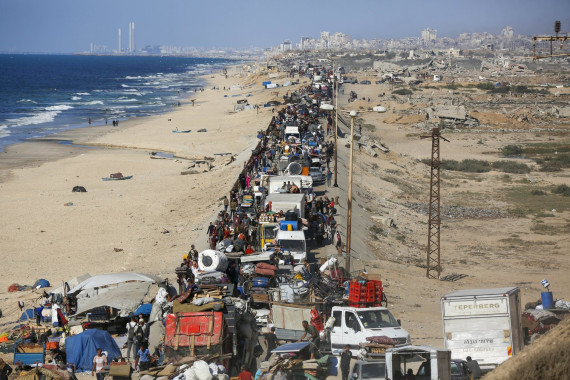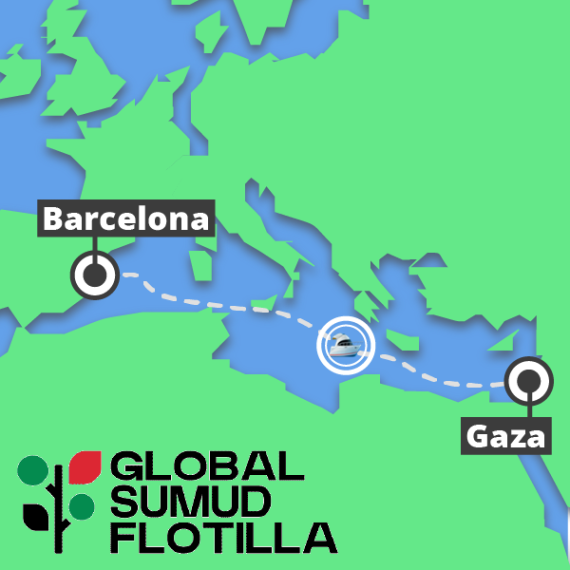
Israel’s growing pariah status is Gaza’s best hope after UN confirms genocide
Posted: 22nd September 2025
US secretary of state Marco Rubio’s visit to Israel last weekend confirmed what we already knew: the Trump administration has given Binyamin Netanyahu’s government carte blanche to level Gaza in its efforts to destroy Hamas.
Near enough dismissing any chance of a peaceful outcome, Rubio said: “Sometimes when you’re dealing with a group of savages like Hamas, that’s not possible.”
It was unsurprising, then, when days later the UN’s human rights council concluded that Israel is committing genocide in its report on the conflict. It said the country is acting “with intent to destroy, in whole or in part, a national, ethnic, racial or religious group”.
Israel’s ambassador to the UN in Geneva, Daniel Meron, quickly branded the UN’s paper a “libellous rant” written by “Hamas proxies”. Israel may have “categorically rejected” the report, but other comments made by members of its government this week certainly supported its findings.
FOLLOWING THE FLOTILLA
First, Netanyahu’s finance minister spoke at a real estate conference in Tel Aviv about Israel’s efforts to level Gaza and rebuild new Israeli towns and cities from the ruins. Bezalel Smotrich described the Gaza Strip as a “bonanza” for Israel, which he said has “already started negotiations with the Americans” over the future development of the region.
“We have paid a lot of money for this war. We have to see how we are dividing up the land in percentages,” Smotrich said, according to The Times of Israel. He added: “The demolition, the first stage in the city’s renewal, we have already done. Now we need to build.”
That demolition is currently leading to around a million Palestinians in Gaza being slowly forced south to a hugely overcrowded and under-resourced ‘humanitarian zone’ close to the Egyptian border. It is as if the entire population of Manchester were being forced to travel long distances, mostly on foot along dangerous roads, while facing constant risk of attack, to tented camps as winter approaches.
What will happen to the Palestinians once they arrive is unclear, but in the short term, their lives will be little short of appalling. From Netanyahu’s perspective, it will most likely be a reiteration of what his government said in the immediate aftermath of Hamas’s 7 October attack of two years ago, that responsibility for Gaza’s Palestinians would somehow be a matter for “the international community” rather than Israel, whatever that might mean.
What Smotrich didn’t mention, but is nonetheless quite clear, is that in parallel with this, Israel will also greatly increase pressure on the three million Palestinians in the occupied West Bank, not least through the violent actions of Jewish settlers. Some Palestinians will be forced to move to Jordan to escape this violence, while others will likely flee to the few large West Bank towns such as Ramallah, Tulkarm and Nablus.
Then, with Israeli government support, many new Jewish settlements will be laid out and factories built, with Palestinians ending up as low-cost Labour, further encouraging outward migration.
- Keep openDemocracy free to read for everyone
- Provide our team with the support they need to work safely in a dangerous world
- Deliver the reporting that matters to you – and that reaches as many people as possible
For now, Palestinians and other non-Jewish people still outnumber Jews in Israel and the occupied territories, but that will not last. Eventually, the balance in the whole territory is likely to be around four million Palestinians and other non-Jews and double that number of Jews. Given the impact of Israel’s killing and physical destruction, its international reputation will be wrecked across most of the world as it is reduced to a pariah state.
If that overall picture seems extreme, then it is strongly supported by another speech this week, this time by Netanyahu himself. The Israeli prime minister told a press conference that in a world riven with antisemitism, the way forward for Israel is to become a future “super Sparta” of the Middle East, with two distinguishing features.
One is that the country will become more economically self-sufficient, a near-autarky, and better able to resist sanctions and disinvestment. A major exception will be maintaining its military industries and their valuable arms exports. These may even increase in value as more “combat-proven” weapons become available, not least the unmanned explosive-laden armoured vehicle currently being used in Gaza City.
The second feature will be military power itself, with Israel expanding its capabilities in conventional and counter-insurgency warfare while maintaining a powerful nuclear arsenal.
That is Israel’s current vision. It could come unstuck if the US withdraws its support, but that is highly unlikely as long as Trump is in the White House.
Support within Israel is another matter. The far-right religious and nationalist forces do have considerable influence as long as Netanyahu survives, but there is increasing unease among secular Jews. That is likely to increase as more states recognise Palestine – France, the UK, Canada, Australia and Belgium are among those to have announced plans to do so imminently – and sanctions and boycotts increase, but the impact of these moves may take time.
Meanwhile, the sheer suffering in Gaza, especially the killing of many thousands of children, and the treatment of Palestinian prisoners, including torture, point to a huge risk facing Israel. For now, it is being widely regarded as a pariah state, but it may soon be seen as a terror state.

